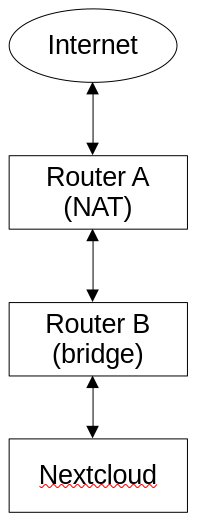Your bridge isn't bridging properly. If Router B is sending a destination unreachable then the packets are being handled on it further up the stack at layer 3 by some sort of routing component rather than by a layer 2 bridging one.
Selfhosted
A place to share alternatives to popular online services that can be self-hosted without giving up privacy or locking you into a service you don't control.
Rules:
-
Be civil: we're here to support and learn from one another. Insults won't be tolerated. Flame wars are frowned upon.
-
No spam posting.
-
Posts have to be centered around self-hosting. There are other communities for discussing hardware or home computing. If it's not obvious why your post topic revolves around selfhosting, please include details to make it clear.
-
Don't duplicate the full text of your blog or github here. Just post the link for folks to click.
-
Submission headline should match the article title (don’t cherry-pick information from the title to fit your agenda).
-
No trolling.
Resources:
- selfh.st Newsletter and index of selfhosted software and apps
- awesome-selfhosted software
- awesome-sysadmin resources
- Self-Hosted Podcast from Jupiter Broadcasting
Any issues on the community? Report it using the report flag.
Questions? DM the mods!
Indeed it is not. Do you, by chance, have any suggestions -- troubleshooting, alternatives, etc.?
run ip route and ip route get $CLIENT_PUBLIC_IP on router B and see if it has a route to the client, and/or if the default route is correct. Its default gateway might not be set correctly (it should be router A)
and responds appropriately (SYN, ACK),
Does it respond to the client address (public IP?)
I'm not exactly sure what the previous issue was, but it appears that, possibly, the previous bridge that was in use was broken in some way. I have since switched the primary router to one that supports WDS, and created a WDS bridge between the two, and now everything is working as expected.
